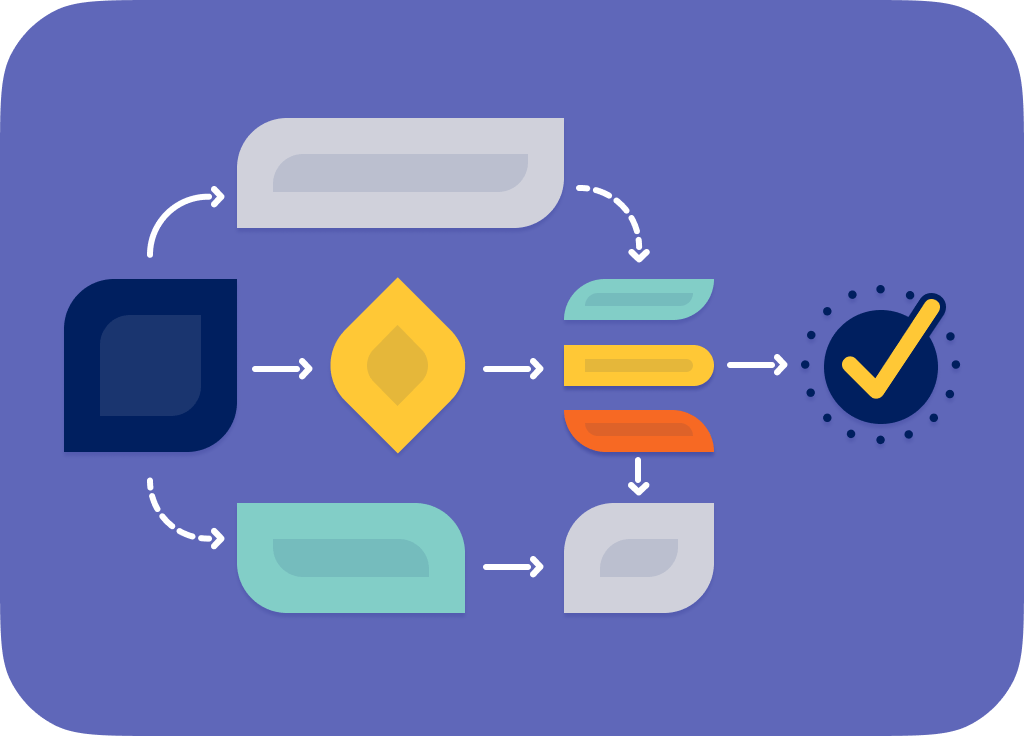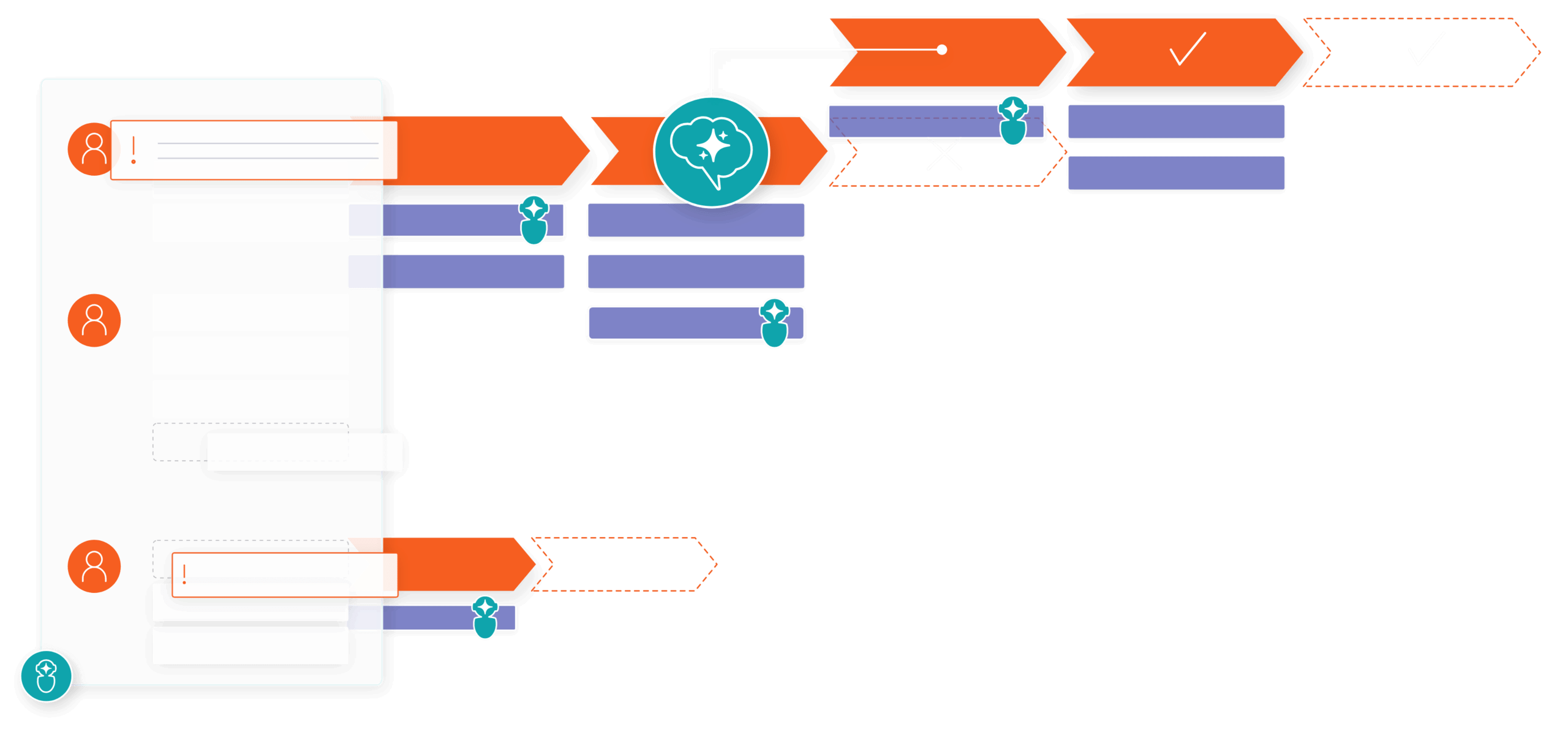
Workflow optimization

What is workflow optimization?
Workflow optimization is the strategic fine-tuning of organizational processes to boost efficiency. It's a systematic approach aimed at minimizing waste, reducing errors, and expediting task completion.
At its core, a workflow serves as a blueprint, breaking down complex processes into manageable steps. As businesses grow, so do their workflows, which also become more intricate. The challenge is to keep them streamlined and avoid unnecessary complexities.

Why is workflow optimization important?
Workflow optimization isn’t just about efficiency; it's a strategic move that improves customer satisfaction, productivity, and overall organizational effectiveness – all of which reduce costs and improve revenue.
Benefits of workflow optimzation
- Improved customer relationships
Timely and consistent responses to inquiries enhance customer satisfaction. - Reduced bottlenecks
Streamlining processes eliminates congestion points, ensuring smooth production. - Decreased waste
Identifying and removing non-essential activities enhances resource efficiency. - Increased productivity
Optimized workflows enable quicker task completion. - Greater agility
Streamlined processes make it easier for organizations to adapt to changes. - Reinforced compliance
Standardized processes help meet regulatory compliance requirements.


How to optimize workflows
Workflow optimization is akin to conducting a meticulous tune-up of an organization's operational engine. This systematic process involves several key steps to ensure processes are streamlined, efficient, and aligned with organizational goals.
- Review goals
Clearly define the goals of the organization to guide the optimization process - Identify inefficiencies
Conduct a comprehensive analysis of existing workflows. Identify areas of redundancy and inefficiencies that hinder smooth operations. - Determine limitations
Identify constraints within the processes, or factors that limit or impede progress toward goals. - Eliminate bottlenecks
Collaborate with teams to eliminate bottlenecks and automate the overall workflow. - Document workflow steps
This not only provides clarity but also serves as a reference for future optimizations and employee training. - Conduct workflow mapping
Create visual maps of workflows. These graphical representations offer a clear overview, making it easier to identify areas for improvement.
Workflow optimization strategies
Optimizing workflows involves employing effective strategies tailored to an organization's needs. Here are some top strategies:
Agile methodology
Visual, collaborative, and adaptable, Agile promotes iterative improvements and quick adaptations to changing circumstances.
Business process improvement (BPI)
This workflow process optimization methodology involves identifying and addressing process inefficiencies through continuous analysis and improvement.
Lean practices
Lean methodologies eliminate waste by focusing on value-adding activities and streamlining processes.
Six Sigma
This approach relies on data-driven methods to identify and eliminate defects or inefficiencies, ensuring high-quality outputs.
Business process re-engineering (BPR)
BPR radically redesigns workflows for substantial improvements, often using technology and innovation.
Theory of constraints (TOC)
TOC identifies and alleviates constraints to optimize the entire workflow and achieve organizational goals.

Challenges of workflow optimization
Despite its many benefits, workflow optimization isn't without its challenges. Organizations often encounter hurdles during the optimization journey:
- Resistance to change
Employees might resist changes to established workflows, fearing disruptions and additional workload. - Lack of visibility
Inefficient workflows often lack transparency, making it challenging to identify bottlenecks and areas for improvement. - Complexity in large organizations
Larger enterprises face the complexity of optimizing numerous interconnected workflows across departments. - Resource limitations
Limited resources, including time and budget constraints, can hinder the implementation of advanced optimization strategies. - Technical barriers
Outdated or incompatible technology may pose challenges for integrating new workflow optimization tools. - Insufficient training
Employees might struggle with new processes if training programs are inadequate or non-existent.

Learn why businesses are embracing low-code development
How can software help with workflow optimization?
Workflow optimization is a process, not a software solution. But that doesn’t mean the right workflow optimization software can’t help. In fact, using software can enhance your optimization process in several ways:
Task automation
Software like Pega’s Robotic Process Automation™ can automate routine tasks, reducing manual efforts and ensuring faster and more accurate execution.
Data tracking and analysis
Tools like Pega’s Process AI™ capture and analyze data at every stage of the workflow, giving you the insight you need to make informed decisions.
Real-time notifications
Pega's workflow management solutions provide real-time notifications. This keeps teams updated on task progress and deadlines and highlights potential bottlenecks.
Workflow mapping and visualization
Intuitive visualization tools in business process management software help in mapping out workflows, which makes it much easier to identify areas for improvement.

